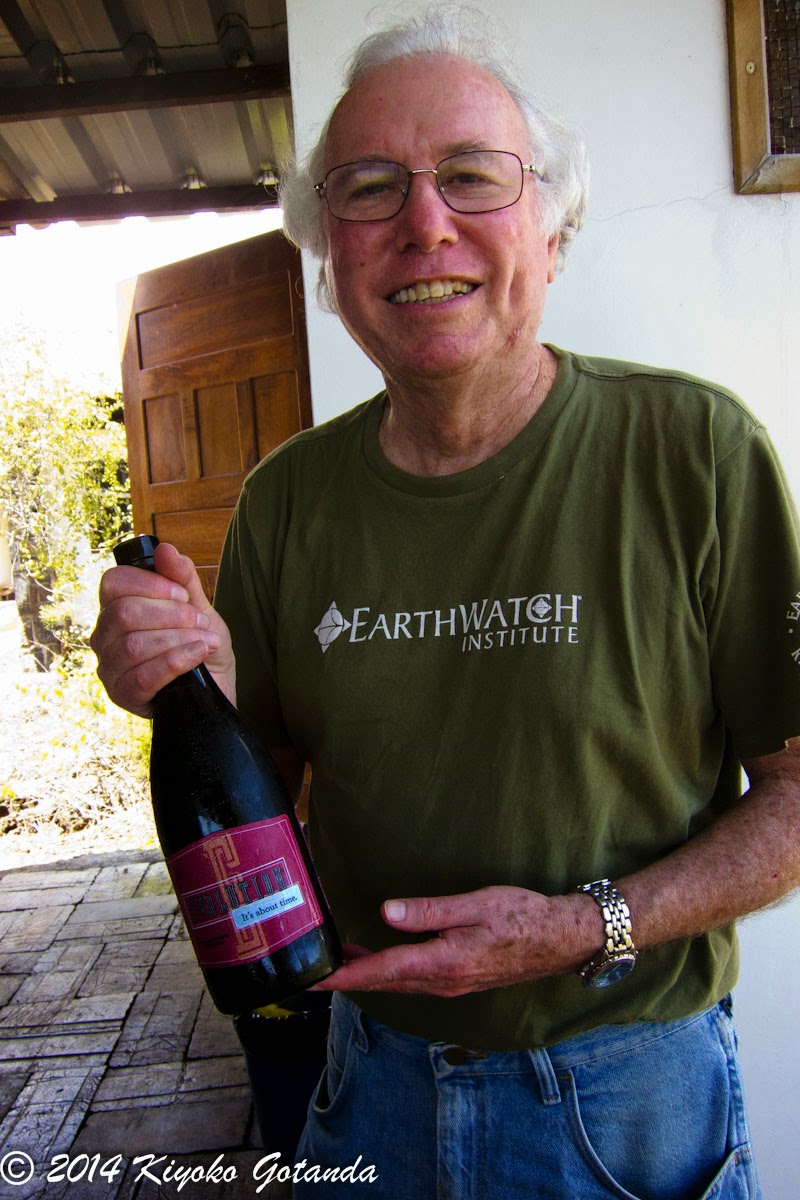Today was our first true field day with the team. 4.30 am
wake-ups, even for morning people, are hard to cope with. After breakfast and
coffee (at least for me!), we headed back into the field. It’s been about a
week and a half since I’d been to EG, so it was nice to be back our catching
birds and helping process. The practice session the afternoon before proved
quite useful as the team was setting up nets with ease. One team even noticed
an error in the net set-up that the researchers had overlooked and fixed it
without our even knowing it! Done like true pros.
We set up in the Shire. For those who don’t know, the
various areas of EG are named after areas found in the Lord of the Rings
Trilogy, and include places such as the Shire, Amon Sul, Rohan, and Mordor.
Each field site area is representative of the places as described in the books
and visualized in the movies. For instance, the Shire is a flat area, with
relatively few obstacles. It’s a comfortable place for people who are just
getting started in studying Darwin’s finches. Mordor, on the other hand, has
only one ‘gate’ to get through. The rest of the area is fenced in naturally by
cacti, brambles, and rocks, and once inside, the terrain is incredibly rocky,
uneven, and treacherous. Luckily, there are no orcs or Nazgul to contend with
anywhere in our field site.
We had a great morning, catching over 20 birds total, and at
least one of each of the finches normally caught there: small, medium, and
large ground finches, cactus finch, and a small tree finch. One very
interesting thing was we caught a large morph medium ground finch and a large
ground finch. I thought the medium ground finch was a large ground finch
because its beak was quite large, but the others were not convinced and thought
it was a large morph, medium ground finch. What confirmed this was we caught a
large ground finch right after the medium ground finch, and once compared side
by side, you could see the difference between a large morph, medium ground finch (left),
and the large ground finch (right).
The other team had a successful observation transect through
town on the main drag, and spotted a few nests, as well as lots of birds and
their behaviour. They even picked up some food for lunch, which was a delicious
lentil soup made by one of the volunteers. In honour of our team, Harold and
Susan had found an Oregonian wine called, appropriately enough, Evolution, and
wanted to share it with the team, so we had a nice treat that afternoon with
lunch!
That afternoon, we headed off to our site on the research
station while the other team did data entry. We had less birds, but were still
kept busy as the volunteers switched which tasks they were doing while processing
the birds. Each volunteer quickly adapted to their new tasks and we soon had a
steady work flow with the birds we caught.
 |
| Photo by Jeff Podos |
 |
| Photo by Jeff Podos |
 |
| Photo by Jeff Podos |
Don't forget! We're tweeting from the point of view of the finches, researchers, and volunteers @Pinzonteam




















